The first step in any fly recipe is ‘choose your hook’! Therefore, understanding the various shapes, components, or parts of a fly hook, the ‘hook anatomy’, is a great place for any beginner fly tyer to start. And, even experienced fly tyers can benefit from a refresher in how fly hooks are structured! To get you started on understanding fly hooks and hook selection, here are definitions for the various components of any fly hook:
Understanding Fly Fishing Hook Anatomy
Total Fly Hook Length
Overall length of hook from tip of eye to bend.
Hook Shank
Part of the hook from behind the eye to the beginning of the bend, which is typically directly above the space between the point and the barb. Standard shank length is defined as the distance of twice the gape plus the width of the eye. An ‘X’ system is used to denote longer or shorter than standard lengths. Each ‘X’ represents one hook size, so a size 6, 2x long (2XL) has a shank length of a standard size 4 hook. A size 6, 2x short (2XS) would have a shank length of a standard size 8 hook. Almost all fly hooks are even-numbered but the ‘X’ designation is noted by individual digits. Shank can be straight or curved.
The shank length of a fly fishing hook is a critical factor that significantly influences the overall appearance and effectiveness of a fly. It directly impacts the fly's profile, silhouette, and buoyancy. Short shank hooks are adept at imitating insects with compact bodies, making them ideal for emerger and nymph patterns. On the other hand, long shank hooks excel in creating streamer patterns, enhancing the illusion of larger prey.
Hook Bend
Curved portion of the hook ending just before the point. Bends can be round, limerick, sproat, or reversed offset. The classic "Sproat" bend, where the hook straightens right before the point, is versatile and widely used, offering reliable hook sets across various fly patterns. The "Curved" bend is favored for emerger and caddis fly imitations, mimicking the natural posture of aquatic insects.
Hook Bite or Throat
Distance from the top of the bend to its intersection with the gape.
Hook Gape (or Gap)
Distance between the hook shank and the point. A standard gape is slightly less than half the standard hook shank length. Gape and shank length are the determining factors in hook sizing.
Gape plays a crucial role in determining hooking efficiency. A wide gape offers a larger target area for the fish to engulf the fly, increasing the chances of a solid hook set. In contrast, a narrow gape is suitable for delicate presentations, especially when imitating small insects like midges. Balancing gape with shank length is essential to ensure effective hook penetration and secure hook sets.
Hook Barb
Sharp projection near the end of a hook that is angled away from the main point to make extraction difficult. Some hooks have mini-barb and some are barbless to facilitate ‘catch & release’.
Hook Point
Sharpened end of the hook that penetrates the fishes mouth. Strong, sharpened hook points, regardless of barb style, are essential for quick penetration and effective hook-ups.
Hook Eye
Ring, hole or loop at the end of the shank to which the fly line (tippet section) is attached. Eyes can be positioned straight, up, or down.
Front Length
Distance from top of bend to end of the point.
Wire Gauge
In addition to the parts of the hook’s anatomy, hooks are also made from various standardized wire gauges or thicknesses. Gauges run from very thin wire to thicker gauge wire, often referred to as fine wire, heavy wire, extra heavy, 2X heavy, 3X heavy, etc.
Heavier wire gauges are ideal for targeting larger fish species and enduring battles against powerful currents. Lighter wire gauges, on the other hand, contribute to delicate presentations and finesse fishing. Choosing the right wire gauge also affects the overall weight of the fly, influencing its sink rate and behavior in the water column.
Want a copy of this Hook Anatomy Guide to post at your tying desk. You can download it here.


2 comments
Jason Lee Woodyard
Totally agree with Carl. Needs to be a chart that has all brands and what they are used for and a cross reference to be able to find alternatives.
Carl Soderland
The anatomy of a hook is terrific. What we even be more helpful is a chart, by manufacturer and number,of comparable hooks, ie a Mustad dry fly hook, eye down, to a Daiichi dry fly hook, eye down. I have found these charts on Google, but they are often incomplete.
Many thanks.
Carl